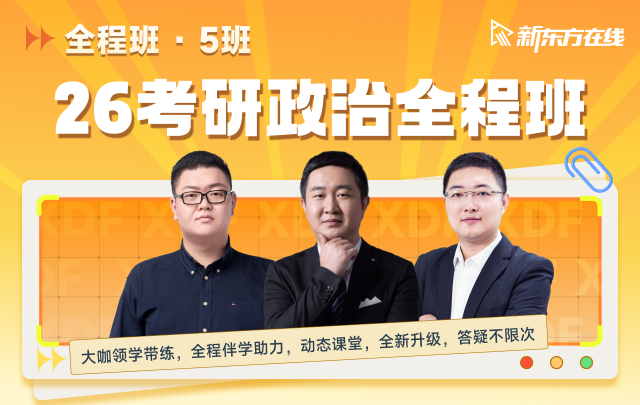1998-2022 ChinaKaoyan.com Network Studio. All Rights Reserved. 沪ICP备12018245号
2019年考研英语一真题(文字完整版)
2019年全国硕士研究生入学统一考试英语(一)试题
Section I Use of English
Directions:
Read the following text. Choose the best word (s) for each numbered blank and mark A, B, C or D on the ANSWER SHEET (10 points)
Today we live in a world where GPS systems, digital maps, and other navigation apps are
available on our smart phones. I of us just walk straight into the woods without a phone. But
phones 2 on batteries, and batteries can die faster than we realize, 3 you get lost without
a phone or a compass, and you 4 cant find north, a few tricks to help you navigate_5 to
civilization, one of which is to follow the land.
When you find yourself well 6 a trail, but not in a completely 7 area, you have to
answer two questions: Which 8 is downhill, in this particular area? And where is the nearest
water source? Humans overwhelmingly live in valleys, and on supplies of fresh water._9 ,if
you head downhill, and follow any H20 you find, you should 10 see signs of people
If you’ve explored the area before, keep an eye out for familiar sights-you may be 11
how quickly identifying a distinctive rock or tree can restore your bearings.
Another 12 Climb high and look for signs of human habitation. 13 even in dense
fores, you should be able to 14 gaps in the tree line due to roads, train tracks, and other
paths people carve 15 the woods. Head toward these 16 to find a way out. At might
can the horizon for 17 light sources such as fires and streetlights, then walk toward the glow
of light pollution.
18 , assuming you're lost in an area humans tend to frequent, look for the 19 we
leave on the landscape. Trail blazes tire tracks. and other features can 20 you to civilization.
1. [A]Some [B]Most [C] Few [D] All
2. [A]put [B]take [C] run [D] come
3. [A]Since [B]If [C]Though [D] until
4. [A]Formally [B]relatively [C] gradually [D] literally
5. [A] back [B]next [C] around [D] away
6. [A] onto [B]off [C]across [D] alone
7. [A] unattractive [B]uncrowded [C]unchanged [D]unfamiliar
8.[A] site [B]point [C]way [D] place
9. [A] So [B]Yet [C]Instead [D] Besides
lO. [A] immediately [B] intentionally [C] unexpectedly [D]eventually
11. [A] surprised [B] annoyed [C] frightened [D]confused
12. [A] problem [B]option [C]view [D] result
13. [A] Above all [B] In contrast [C]On average [D] For example
14. [A]bridge [B] avoid [C]spot [D] separate
15. [A]form [B]through [C] beyond [D] Under
16. [A] posts [B]links [C] shades [D]breaks
17. [A] artificial [B] mysterious [C]hidden [D]limited
18. [A] Finally [B]Consequently [C]Incidentally [D] Generally
19. [A] memories [B]marks [C]notes [D]belongings
20. [A]restrict [B]adopt [C] lead [D] expose
Section II Reading Comprehension
Part A
Directions:
Read the following four texts, Answer the questions each text by choosing A B. C or D.
Mark your answers on the ANSWER SHEET (40 points)
Text 1
Financial regulators in Britain have imposed a rather unusual rule on the bosses of big banks.
Starting next year. any guaranteed bonus of top executives could be delayed 1o years if their banks are under investigation for wrongdoing. The main purpose of this " clawback" rule is to hold bankers accountable for harmful risk taking and to restore public trust in financial institution, Yet officials also hope for a much larger benefit: more long term decision-making not only by banks but by all corporations, to build a stronger economy for future generations.
“Short-termism” or the desire for quick profits, has worsened in publicly traded companies.
says the Bank of England's top economist. Andrew Haldane. He quotes a gaint of classical
economics, Alfred Marshall in describing this financial impatience as acting like" Children who
pick the plums out of their pudding to eat them at once” rather than putting them aside to be eaten last.
The average time for holding a stock in both the United States and Britain. he notes has
dropped from seven years to seven months in recent decades. Transient investors, who demand
high quarterly profits from companies, can hinder a firms efforts to invest in lone-term research
or to build up customer loyalty. This has been dubbed "quarterly capitalism”.
In addition, new digital technologies have allowed more rapid trading of equities quicker use
of information, and thus shorters attention spans in financial markets. " There seems to be a
predominance of short- term thinking at the expense of long-term investing,” said Commissioner
Daniel Gallagher of the US Securities and Exchange Commission in a speech this week.
In the US, the Sarbanes-Oxley Acl of 2002 has pushed most public companies to defer
performance bonuses for senior executives by about a year, slightly helping reduce"short-termism. " In its latest survey of CEO pay The Wall street Journal finds that"a substantial part"of executive pay is now tied to performance.
Much more could be done to encourage "long-termism, such as changes in the tax code
and quicker disclosure of stock acquisitions. In France, shareholders who hold onto a company
investment for at least two years can sometimes can more voting rights in a company.
Within companies, the right compensation design can provide incentives for executives to
think beyond their own time at the company and on behalf of all stakeholders, Britain’s new rule is a reminder to bankers that society has an interest in their performance not just for the short term but for the long term.
21. According to Paragraph 1, one motive in imposing the new rule is the
A. enhance bankers' sense of responsibility
B help corporations achieve larger profits
C. build a new system of financial regulation
D. guarantee the bonuses of top executives
22. Alfred Marshall is quoted to indicate
A. the conditions for generating quick profits
B. governments impatience in decision-making
C. the solid structure of publicly traded companies
D. "short-termism" in economic activities
23. It is argued that the influence of transient investment on public companies can be
A. indited B. adverse C. minimal D temporary
24. The US and France examples and used to illustrate
A. the obstacles to preventing "short-termism.
B. the significance or long term thinking.
C. the approaches to promoting long-termism.
D. the prevalence of short-term thinking.
25. Which of the following would be the best title for the text
A. Failure of Quarterly Capitalism
B. Patience as a Corporate Virtue
C. Decisiveness Required of Top Executives
D. Frustration of Risk-taking Bankers
Text 2
Grade inflation-the gradual increase in average GPAs (grade-point averages) over the past
few decades-is often considered a product of a consumer era in higher education, in which
students are treated like customers to be pleased. But another, related force -a policy often buried deep in course catalogs called grade forgiveness"- is helping raise GPAs.
Grade forgiveness allows students to retake a course in which they received a low grade, and
the most recent grade or the highest grade is the only one that counts in calculating a student's
overall GPA.
The use of this little-known practice has accelerated in recent years, as colleges continue to
do their utmost to keep students in school (and paying tuition) and improve their gradation rates.
When this practice fir started decades ago, it was usually limited to freshmen, to give them a
second chance to take a class in their first year if they struggled in their transition to college-level
courses. But now most colleges, save for many selective campuses, allow all undergraduates, and
even graduate students, to get their low grades forgiven.
College officials tend to emphasize that the goal of grade forgiveness is less about the grade
itself and more about encouraging students to retake courses critical to their degree program and
gradation without incurring a big penalty. "Untimely. "said Jack Mine, Ohio State University's
registrar. "we see students achieve more success because they retake a course and do better in
subsequent contents or master the content that allows them to graduate on time.
That said, there is a way in which grade forgiveness satisfies colleges own needs as well. For
public institutions state finds are sometimes tied partly to their success on metrics such as
graduation rates and student retention so better grades can, by boosting figures like those, mean
more money. And anything that raises GPAs will likely make students who, at the end of the day
are paying the bill-feel they’ve gotten a better value for their tuition dollars, which is another big
concern for colleges.
Indeed grade forgiveness is just another way that universities are responding to consumers'
expectations for higher education. Since students and parents expect a college degree to lead to a job, it is in the best interest of a school to tum out gradates who are as qualified as possible-or
at least appear to be. On this, students' and colleges’ incentives seem to be aligned.
26. What is commonly regarded as the cause of grade inflation?
A. The change of course catalogs.
B. Students indifference to GPAS.
C Colleges neglect of GPAS.
D. The influence of consumer culture.
27. What was the original purpose of grade forgiveness
A. To help freshmen adapt to college learning.
B. To maintain colleges graduation rates.
C. To prepare graduates for a challenging future.
D. To increase universities’ income from tuition.
28. According to Paragraph 5. grade forgiveness enables colleges
A. obtain more financial support.
B. boost their student enrollments.
C. improve their teaching quality.
D. meet local governments’ needs.
29. What does the phrase “to be aligned” (Line 5. Para. 6) most probably mean?
A. To counterbalance each other
B. To complement each other.
C. To be identical with each other
D. To be contradictory to each other.
30. The author examines the practice of grade forgiveness by
A assessing its feasibility
B.analyzing the causes behind it.
C. comparing different views on it.
D. listing its long-run effects
Text 3
This year marks exactly two centuries since the publication of Frankenstein, or. The Modem
Prometheus by Mary Shelley. Even before the invention of the electric light bulb, the author
produced a remarkable work of speculative fiction that would foreshadow many chical questions
to be raised by technologies yet to come.
Today the rapid growth of artificial intelligence (An) raises fundamental questions: "What is
intelligence, identity, or consciousness? what makes humans humans?
What is being called artificial general intelligence, machines that would imitate the way
humans think continues to evade scientists. Yet humans remain fascinated by the idea of robots
that would look, move, and respond like humans, similar to those recently depicted on popular
sci-fi Tv series such as"Westworld and"Humans".
Just how people think is still far too complex to be understood let alone reproduced, says
David Eagleman, a Stanford University neuroscientist, "We are just in a situation where there are
no good theories explaining what consciousness actually is and how you could ever build a machine to get there.”
But that doesn't mean crucial ethical issues involving Al aren't at hand. The coming use of
autonomous vehicles. for example poses thorny ethical questions. Human drivers sometime
make split-second decisions. Their reactions may be a complex combination of instant reflexes.
input from past driving experiences, and what their eyes and ears tell them in that moment. AI
"vision"today is not nearly as sophisticated as that of humans. And to anticipate every imaginable driving situation is a difficult programming problem.
Whenever decisions are based on masses of data. "you quickly get into a lot of ethical
questions, "notes Tan Kiat How, chief executive of a Singapore-based agency that is helping the
government develop a voluntary code for the ethical use of Al. Along with Singapore, other
governments and mega-corporations are beginning to establish their own guidelines. Britain is
setting up a data ethics center. India released its Al ethics strategy this spring.
On June 7 Google pledged not to"design or deploy Ar" that would cause"overall harm, "or
to develop Al-directed weapons or use Al for surveillance that would violate international norms.
It also pledged not to deploy AI whose use would violate international laws or human rights.
While the statement is vague, it represents one starting point, So does the idea that decisions made by Al systems should be explainable, transparent. and fair.
To put it another way. How can we make sure that the thinking of intelligent machines reflects humanity’s highest values? Only then will they be useful servants and not Frankenstein’s out-of-control monster.
31. Mary Shelley’s novel Frankenstein is mentioned because
A. fascinates Al scientists all over the world
B.has remained popular for as long as 200 years.
C. involves some concerns raised by Al today
D.has sparked serious ethical controversies
32. In David Eagleman's opinion, our current knowledge of consciousness
A. helps explain artificial intelligence.
B. can be misleading to robot making
C. inspires popular sci-fi TV series
D.is too limited for us to reproduce it
33.The solution to the ethical issues brought by autonomous vehicles
A. can hardly ever be found.
B. is still beyond our capacity
C. causes little public concern
D.has aroused much curiosity
34. The authors attitude toward Google’s pledges is one of
A. Affirmation B. skepticism C. contempt D. respect
35. Which of the following would be the best title for the text?
A. Al’s Future: In the Hands of Tech giants
B. Frankenstein, the Novel Predicting the Age of A
C. The Conscience of Al: Complex But Inevitable
D. AI Shall Be Killers once out of Control
Text 4
States will be able to force more people to pay sales tax when they make online purchases
under a Supreme Court decision Thursday that will leave shoppers with lighter wallets but is a big
financial win for states.
The Supreme Courts opinion Thursday overruled a pair of decades-old decisions that states
said cost them billions of dollars in lost revenue annually. The decisions made it more difficult for
states to collect sales tax on certain online purchases.
The cases the court overturned said that if a business was shipping a customers purchase to a state where the business didn’t have a physical presence such as a warehouse or office. the
business did 't have to collect sales tax for the state. Customers were generally responsible for
paying the sales tax to the state themselves if they weren’t charged it, but most didn’t realize they owed it and few paid.
Justice Anthony Kennedy wrote that the previous decisions were flawed. Each year the
physical presence rule becomes further removed from economic reality and results in significant
revenue losses to the States." he wrote in an opinion joined by four other justices, Kennedy wrote that the rule limited states ability to seek long-term prosperity and has prevented market
participants from competing on an even playing field.”
The ruling is a victory for big chains with a presence in many states, since they usually
collect sales tax on online purchases already Now, rivals will be charging sales tax where they
hadn't before, Big chains have been collecting sales tax nationwide because they typically have
physical stores in whatever state a purchase is being shipped to. Amazon. com. with its network of warehouses also collects sales tax in every state that charges it, though third-party sellers who use the site don 't have to.
Until now, many sellers that have a physical presence in only a single state or a few states
have been able to avoid charging sales taxes when they ship to addresses outside those states
Sellers that use eBay and Etsy. which provide platforms for smaller sellers, also hat
collecting sales tax nationwide. Under the ruling Thursday, states can pass laws
out.. state sellers to collect the state's sales tax from customers and send it to the stale
Retail trade groups praised the ruling. saying it levels the playing field for local and online
businesses. The losers, said retail analyst Neil Saunders, are online-only retailers especially
smaller ones. Those retailers may face headaches complying with various state sales tax laws. The
Small Business Entrepreneurship Council advocacy group said in a statement "Small
businesses and internet entrepreneurs are not well served at all by this decision.
36. The Supreme Court decision Thursday will
A. Dette business relations with states
B. put most online business in a dilemma
C. make more online shoppers pay sules tax
D. force some sates to ct sales tax
37. It can be learned from paragraph 2 and 3 that the overruled decisions
A. have led to the domainance of e-commerce
B. have cost consumers a lot over the years
C. were widely criticized by online purchase
D. were consider unfavorable by states
38. According to Justice Anthony Kennedy, the physical presence rule has
A. hindered economic development
B. brought prosperity to the country
C. harmed fair market competition
D. Boosted growth in states, revenue
39. Who are most likely to welcome the Supreme Court ruling
A. Internet entrepreneurs
B. Big- chair owners
B. Third-party sellers
D. Small retailers
40. In dealing with the Supreme Court decision Thursday the author
A. gives a factual account of it and discusses its consequences
B. describes the long and complicated process of its making
C. presents its main points with conflicting views on them
D. cities some saces related to it and analyzes their implications
Part B
Directions.
The following paragraphs are given in a wrong order. For Questions 41-45. you are required to reorganize these paragraphs into a coherent article by choosing from the list A-G and filling then into the numbered boxes. Paragraphs C and F have been correctly placed. Mark your answers on ANSWER SHEET. (10 points)
A. These tools can help you win every argument- not in the unhelpful sense of beating your
opponents but in the better sense of learning about the issues that divide people learning why they disagree with us and learning to talk and work together with them. If we readjust our view of arguments-from a verbal fight or tennis game to a reasoned exchange through which we all gain mutual respect, and understanding-then we change the very nature of what it means to"win"an argument.
B. Of course, many discussions are not so successful. Still, we need to be careful not to accuse
opponents of bad arguments too quickly. We need to lean how to evaluate them properly. A large
part of evaluation is calling out bad arguments, but we also need to admit good arguments by
opponents and to apply the same critical standards to ourselves. Humility requires you to recognize weakness in your own arguments and sometimes also to accept reasons on the opposite side.
C. None of these will be easy but you can start even if others refuse to Next time you state your
position, formulate an argument for what you claim and honestly ask yourself whether your
argument is any good. Next time you talk with someone who takes a stand, ask them to give you a reason for their view Spell out their argument fully and charitably. Assess its strength impartially. Raise objections and listen carefully to their replies.
D. Carnegie would be right if arguments were fights, which is how we often think of them. Like
physical tights, verbal fights can leave both sides bloodied. Even when you win, you end up no
better off. Your prospects would be almost as dismal if arguments were even just competitions like. Say, tennis games. Pairs of opponents hit the ball back and forth until one winner emerges from all who entered. Everybody else loses. This kind of thinking is why so many people try to avoid arguments. especially about politics and religion.
E. In his 1936 work How to Win Friends and Influence People, Dale Carnegie wrote: "There is
only one way. to get the best of an argument-and that is to avoid it. " This aversion to arguments is common, but it depends on a mistaken view of arguments that causes profound problems for our personal and social lives- and in many ways misses the point of arguing in the first place.
F. These views of arguments also undermine reason. If you see a conversation as a fight or
competition. you can win by cheating as long as you don go caught. You will be happy to
convince people with bad arguments. You can call their views stupid or joke about how ignorant
they are. None of these tricks will help you understand them, their positions or the issues that
divide you, but they can help you win-in one way.
G. There is a better way to win arguments. Imagine that you favor increasing the minimum wage
in our state, and I do not. If you yell, "Yes, "and I yell. "No, "neither of us learns anything. We
neither understand nor respect each other. and we have no basis for compromise or cooperation. In contrast, suppose you give a reasonable argument: that full-time workers should not have to live in poverty. Then I counter with another reasonable argument: that a higher minimum wage will force businesses to employ fewer people for less time. Now we can understand each other's positions and recognize our shared values, since we both care about needy workers.
41-42-F-43-44-C-45
Part C
Directions:
Read the following text carefully and then translate the underlined segments into Chinese. Your translation should be written neatly on the ANSWER SHEET. (10 points)
It was only after I started to write a weekly column about the medical journals, and beg
read scientific papers from beginning to end that I realized just how bad much of the medical literature frequency was, I came to recognize various sins of a bad paper: the kind of paper that purports to show that people who est more than one kilo of broccoli a week were 1.17 times more likely than those who eat less to suffer late in life from pernicious anaemia. 46. There is a great deal of this kind of nonsense in the medical journals which, when taken up by broadcasters and the lay press, generate both health scores and short-lived dietary enthusiasms.
Why is so much bad science published? A recent paper, titled “The Natural Selection of Bad Science”, published on the Royal Society’s open science website, attempts to answer this intriguing and important question. It says that the problem is not merely than people do bad science,but than out current system of career advancement positively encourages it.what is important is not truth, but inflationary process at work: (47) Nowadays anyone applying for a research post has to have published twice the number of papers than would have been required for the same post only 10 years ago. Never mind the quality,then count the number. (48)Attempts have been made to curd this tendency,for example by trying to incorporate some measure of quality as well as quantity into the assessment of an applicant’s papers. This is the famed citation index,that is to say the number of times a paper has been quoted else where in the scientific literature the assumption being that an important paper will be cited more often than one of small account. (49) This would be reasonable if it were not for the fact that scientist can easily arrange to cite themselves in their future publicat or get associates to do so for them in return for similar favours.
Boiling down an individual’s output to simple metrics, such as number of publications or journal impacts,entails considerable saving in time,energy and ambiguity.Unfortunate the long-term costs of using simple quantitative metrics to assess researcher merit are likely to be quite great.(50) If we are serious about ensuring that our science is both meaningful and reproducible ,we must ensure that our institutions encourage that king of science.
Section III: Writing
Part A
Directions:
Suppose you are working for the “aiding Rural Primary School”project of your university. Write an email to answer the inquiry from an international student volunteer, specifying the details of the project.
You should write about 100 words on the ANSWER SHEET
Do not use your own name in the email , use “Li Ming” instead.
(10 points)
Part B
Directions:
Write an essay of 160-270 words based on the picture below. In your essay, you should:
(1) describe the picture briefly
(2) Interpret the implied meaning, and
(3) Give your comments
Write your answer on the ANSWER SHEET
(20 points)

来源未注明“中国考研网\考研信息网”的资讯、文章等均为转载,本网站转载出于传递更多信息之目的,并不意味着赞同其观点或证实其内容的真实性,如涉及版权问题,请联系本站管理员予以更改或删除。如其他媒体、网站或个人从本网站下载使用,必须保留本网站注明的"稿件来源",并自负版权等法律责任。
来源注明“中国考研网”的文章,若需转载请联系管理员获得相应许可。
联系方式:chinakaoyankefu@163.com
- 2026考研英语全程班 6班
- 权威高配师资亲授技巧,教研千锤百炼科学提分。直录播课相结合精讲互动二合一,专业团队精细化作文批改。讲练结合,随学随练稳步提升。支持试听~
- 主讲团队:王江涛、谭剑波、董仲蠡、许聪杰、陈志超、潘赟、郑艳彤、易熙人

扫码关注
了解考研最新消息












